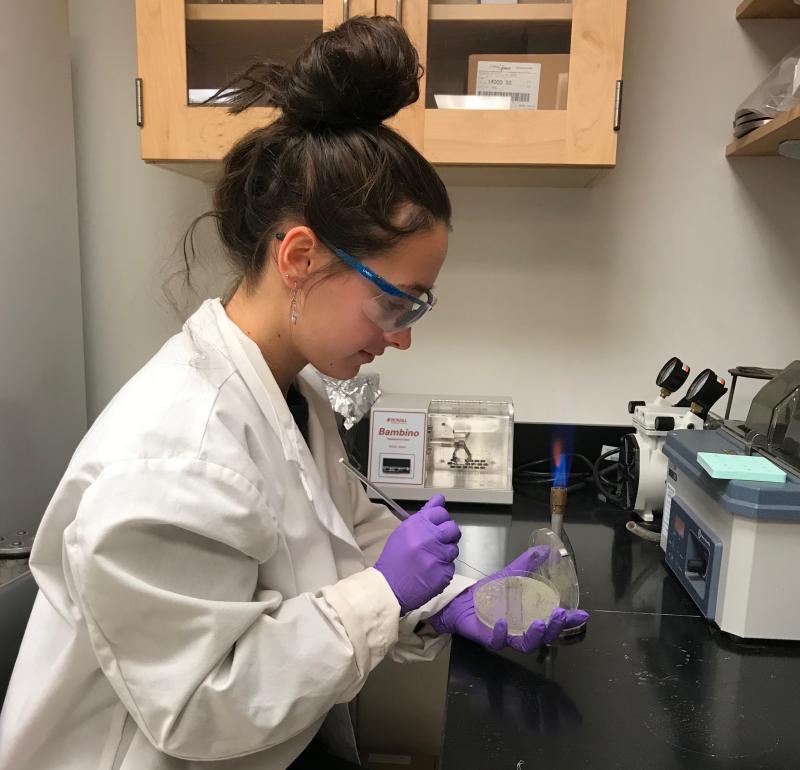Student scours ocean floor to find cures to illness
Rochester resident Emma Keeler will compete in an international science fair this spring, after netting the grand prize at a regional science fair.
Keeler's project, "Bioprospecting for Benthic Fungi and their Bactericidal Antibiotics," won her a first-prize plaque at the South Shore Regional Science Fair, held on March 10 at Bridgewater State University.
Keeler, a junior at Falmouth Academy, said that her school science project was meant to ascertain whether culture samples taken from near an ocean vent, and from the benthic region of the ocean (the top layers of the ocean floor, mostly) could produce vaccinations that are effective against virus pathogens.
"I figured that any species living near a thermal vent live in highly-concentrated areas, and are ingesting more toxins because of their proximity to the vents," Keeler explained. "So there's probably some extra resistance to toxins there."
The problem for Keeler, the daughter of Russ and Wendy Keeler of Rochester, was finding samples to test out her theory. Because those specimens live on the ocean floor, they're difficult and expensive to find or obtain. "It's for that reason that nobody's really every studied antibiotics from this area before," she explained.
Keeler, who hopes to study pharmacology and antibiotics in college, had already interned with geophysicist Dr. Virginia Edgcomb at the Woods Hole Institute. Edgcomb happened to have samples arriving from the Guaymas Basin, off of the coast of California, when she thought of Keeler. Together, Edgcomb and Keeler decided that studying the samples would blend Keeler's interest in ocean vent organisms and antibiotics.
Over about nine months, and under Edgcomb's watchful eye, Keeler used the samples to make a media in which to grow fungi. When she was able to get a species screening of the resulting fungi, she learned that 86 percent of the fungi (six of the seven plants) showed activity against the virus pathogens they were exposed to.
In addition, 82 percent of the fungi samples "completed inhibition," which means they were able to fight and remove all traces of the pathogens.
A further 18 percent removed most, but not all, of the traces of the pathogen. "We can't really use the 18 percent, because that's like saying, 'Well, we took some of the flu away!'" Keeler joked, "but the result was overall a good one."
Keeler's hunch held water. She plans to continue on with the experiment, to see what else she can learn.
Her first-prize award means that Keeler will go on to compete at the Massachusetts State Science and Engineering Fair, held at the Massachusetts Institute of Technology on May 4-5.
Keeler also won the Wilma Shield award, which granted her entry into the International Science and Engineering Fair in Pittsburgh, Pennsylvania from May 13-19.















